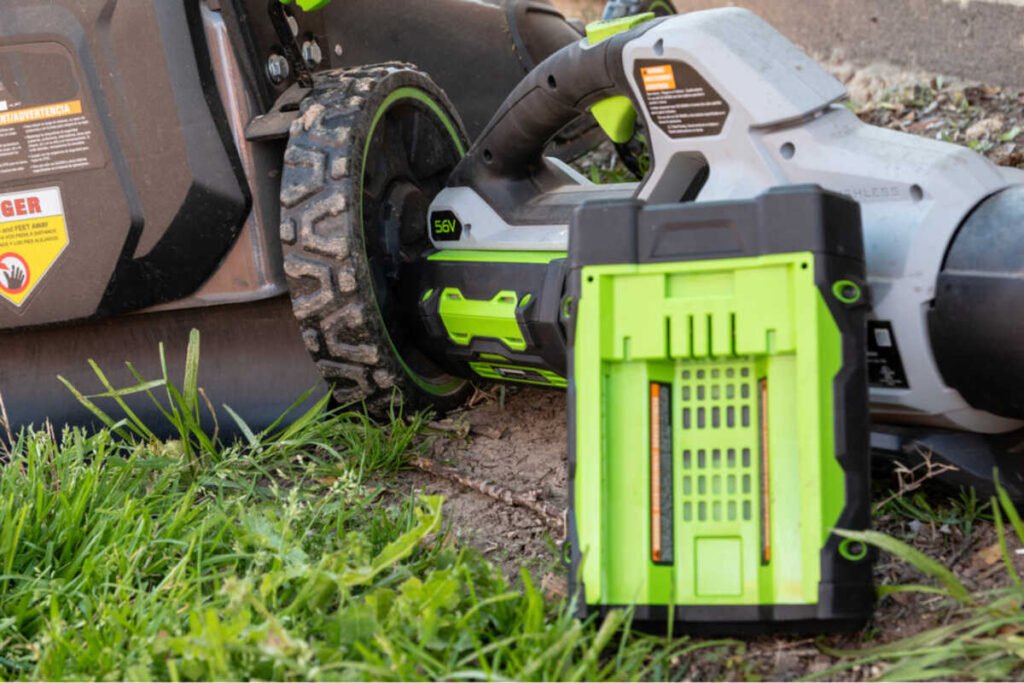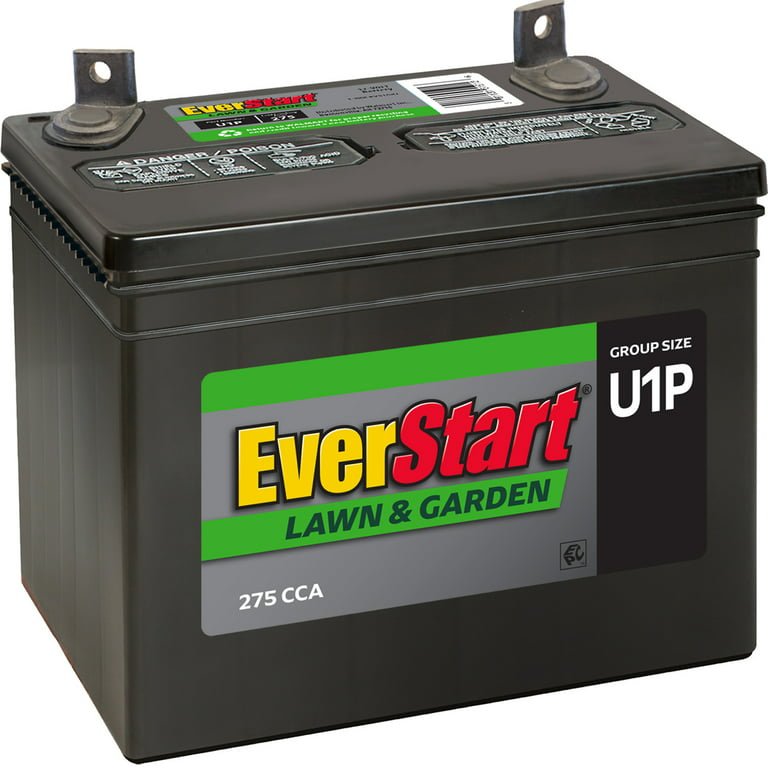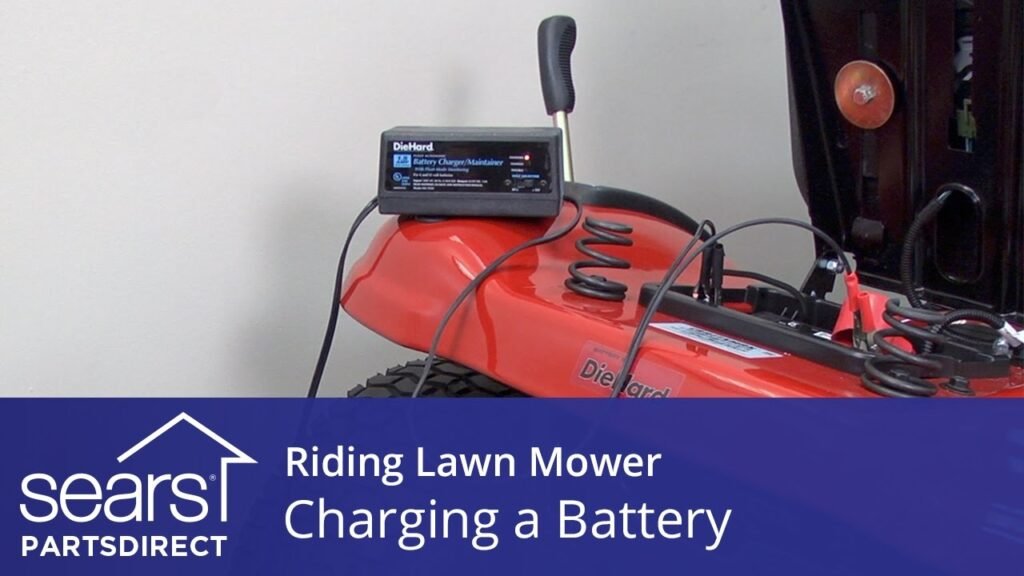Do you want to make sure that your lawn mower battery is always fully charged and ready to go? Well, you’re in luck because we’ve got some essential tips for charging lawn mower batteries that will save you time and frustration. Whether you’re a seasoned gardener or just starting out with your lawn maintenance, these tips will ensure that your battery lasts longer and your mower runs smoothly. So, grab your charger and let’s get started on keeping your lawn immaculate!

This image is property of www.lawnstarter.com.
Different Types of Lawn Mower Batteries
Lead-Acid Batteries
Lead-acid batteries are a popular choice for lawn mowers due to their affordability and durability. These batteries contain lead plates immersed in an electrolyte solution, which allows them to generate electricity. They are known for their ability to provide a consistent and reliable power source, making them suitable for larger lawns that require extended mowing sessions.
Lithium-ion Batteries
Lithium-ion batteries have gained popularity in recent years due to their lightweight and high energy density. They offer a longer runtime than lead-acid batteries and can be recharged faster. Lithium-ion batteries are also maintenance-free, which means you don’t have to worry about checking the water levels or cleaning the terminals. However, they are more expensive than lead-acid batteries, making them a better option for smaller yards or users who value convenience and efficiency.
Nickel-Cadmium Batteries
Nickel-cadmium batteries, also known as NiCd batteries, were commonly used in the past but have mostly been replaced by more advanced battery technologies. They have a lower energy density compared to lithium-ion batteries and are prone to the memory effect, where their capacity decreases if not fully discharged before recharging. However, if you already own a lawn mower with a built-in NiCd battery, it is still possible to charge them properly and ensure their longevity.
Understanding Battery Specifications
To effectively charge your lawn mower battery, it’s essential to understand its specifications. Here are some key terms you should be familiar with:
Voltage
Voltage refers to the electrical potential difference that the battery can provide. Most lawn mower batteries operate at 12 volts (V), although some may have higher or lower voltage ratings. It is crucial to match the charger’s voltage output with the battery’s voltage requirement to ensure safe and efficient charging.
Amp-Hour (Ah) Rating
The amp-hour (Ah) rating indicates the battery’s capacity, or how much charge it can store. A higher Ah rating usually translates to a longer runtime. When selecting a new battery, consider your mowing needs and choose one that offers sufficient capacity to avoid frequent recharging.
Cold Cranking Amps (CCA)
Cold Cranking Amps (CCA) is a specification primarily relevant for lead-acid batteries used in vehicles or equipment that may be exposed to cold temperatures. It measures the battery’s ability to deliver a high current in cold weather conditions. Since lawn mower batteries are not typically subject to extreme cold, CCA is not a significant concern in this context.
Reserve Capacity
The reserve capacity refers to the duration a battery can consistently deliver a specific amount of power before running out. It is an important consideration for lawn mower batteries to ensure they can power your mower until the job is complete. Look for batteries with a higher reserve capacity if you have a larger lawn or if your mowing sessions are usually longer.
This image is property of cdn.aftonvilla.com.
Safety Precautions
Before starting the battery charging process, it is essential to take necessary safety precautions to prevent accidents and protect yourself and your equipment.
Wear Protective Gear
Always wear appropriate protective gear, such as gloves and safety glasses, when working with batteries. This will protect you from acid spills, corrosion, and accidental contact with battery terminals.
Ensure Proper Ventilation
Make sure you are in a well-ventilated area when charging your battery. Lead-acid batteries emit hydrogen gas during charging, which can be potentially explosive. Proper ventilation helps to dissipate the gas and reduces the risk of an explosion.
Avoid Sparks and Flames
Battery charging can generate sparks, which can ignite explosive hydrogen gas. Keep any open flames, sparks, or smoking materials far away from the charging area. It is also wise to charge the battery away from flammable materials to avoid fire hazards.
Keep Children and Pets Away
Ensure a safe distance between children and pets while you are charging your lawn mower battery. Batteries contain hazardous chemicals that can be harmful if ingested or if there is direct contact. Protecting those who are most vulnerable is crucial for maintaining a safe charging environment.
Preparing the Battery and the Mower
Proper preparation of the battery and the mower before charging is necessary to ensure efficient and safe charging.
Read the Mower Manual
Before attempting to charge the battery, read the mower’s manual to familiarize yourself with the manufacturer’s instructions and recommendations. The manual may provide specific guidance on battery charging procedures or precautions that should be followed for your particular model.
Inspect the Battery
Before charging, visually inspect the battery for any signs of damage or corrosion. Look for cracked casings, loose terminals, or leakage of electrolyte. If you notice any problems, such as a damaged or leaking battery, do not attempt to charge it and seek a replacement instead.
Clean the Battery Terminals
Over time, battery terminals may accumulate dirt, corrosion, or residue, which can hinder the charging process. Use a battery terminal cleaner or a mixture of baking soda and water to clean the terminals thoroughly. This will ensure a good connection and prevent any interference during charging.
Disconnect the Battery
Before charging, disconnect the battery from the mower to prevent any accidental electrical currents or short circuits. Refer to the mower’s manual to locate the battery and follow the manufacturer’s instructions for disconnecting it safely.

This image is property of i5.walmartimages.com.
Choosing the Right Charger
Selecting the appropriate charger for your lawn mower battery is crucial for its efficient and safe charging. Consider the following factors when choosing a charger:
Matching Voltage and Capacity
Ensure that the charger you select matches the voltage requirements of your battery. Using a charger with a higher voltage output can damage the battery, while a charger with a lower voltage output may not charge the battery effectively. It is also essential to select a charger suitable for the battery’s capacity, as a mismatched charger may result in overcharging or inadequate charging.
Considering Charge Time
If you prefer shorter charge times, consider investing in a charger with a higher current output. However, keep in mind that certain battery technologies may have specific charging requirements. For example, lithium-ion batteries often require a slower charging rate to prevent overheating or damage.
Smart Chargers vs. Conventional Chargers
Smart chargers, also known as automatic or intelligent chargers, offer advantages over conventional chargers. These chargers have built-in microprocessors that analyze and adjust the charging process based on the battery’s specific needs. They can help extend battery life by preventing overcharging or undercharging, and some models come with additional features like battery diagnostics.
Charging Lead-Acid Batteries
Charging lead-acid batteries correctly is essential for their longevity and optimal performance. Follow these steps to ensure safe and effective charging:
Using a Suitable Charger
Select a charger specifically designed for charging lead-acid batteries. Avoid using automotive or other types of chargers that may not provide the appropriate charging algorithm for your battery.
Connecting the Charger Correctly
Connect the charger to the battery terminals, ensuring that the positive (+) and negative (-) terminals match with the charger’s corresponding connectors. Avoid reversing the polarity, as this can cause damage to the battery and potential hazards.
Setting the Charge Rate
Some chargers allow you to adjust the charge rate. Follow the manufacturer’s recommendations for the appropriate charge rate for your battery. Charging at a higher rate may cause overheating and damage the battery, while charging at a lower rate may result in insufficient charging.
Monitoring the Charging Process
Keep an eye on the charging process to ensure that everything is proceeding smoothly. Check for any signs of overheating, abnormal noises, or unusual smells. If you notice anything out of the ordinary, stop the charging process immediately and consult the charger’s manual or seek professional assistance.

This image is property of www.lawnmowerfixed.com.
Charging Lithium-ion Batteries
Lithium-ion batteries have specific charging requirements to ensure their safety and longevity. Follow these guidelines for charging lithium-ion batteries:
Using the Correct Charger
Always use a charger specifically designed for lithium-ion batteries. Using a charger for a different battery type can result in overcharging, overheating, or even fire hazards.
Connecting the Charger Properly
Ensure that the charger’s connectors match the battery’s terminals correctly. Reversing the polarity or using incorrect connectors can damage the battery or the charger.
Monitoring the Charging Process
Keep a close eye on the charging process to ensure that the battery is charging correctly. Lithium-ion batteries should not be left unattended while charging. If you notice any abnormalities like excessive heat, swelling, or leakage, immediately stop the charging process and disconnect the battery.
Avoid Overcharging
Overcharging lithium-ion batteries can damage them and reduce their lifespan. Many lithium-ion chargers have built-in control circuits that prevent overcharging, but it’s still crucial to monitor the charging process to ensure it stops once the battery is fully charged.
Charging Nickel-Cadmium Batteries
Although nickel-cadmium (NiCd) batteries are less common nowadays, if you have a lawn mower with a built-in NiCd battery, you can still charge it properly. Follow these steps:
Using a Compatible Charger
Use a charger specifically designed for nickel-cadmium (NiCd) batteries. Avoid using chargers for other battery types, as their charging algorithms may not be suitable for NiCd batteries.
Connecting the Charger Properly
Ensure that the charger’s connectors match the battery’s terminals correctly. Reversing the polarity can cause damage to the battery or the charger.
Monitoring the Charging Process
Pay close attention to the charging process to ensure it is proceeding without any issues. If you notice any signs of overheating, leaking, or other abnormalities, stop the charging process immediately and consult the charger’s manual or seek professional assistance.
Avoid Memory Effect
NiCd batteries are susceptible to the memory effect, which can reduce their overall capacity if they are not fully discharged before recharging. To prevent memory effect, it is recommended to discharge the battery completely before initiating the charging process. However, it’s important to note that this step may not be necessary if the battery has been used and charged regularly.

This image is property of www.gardentoolexpert.com.
Charging in Different Weather Conditions
Different weather conditions can affect the battery charging process. Here’s what you need to know:
Hot Weather
In hot weather conditions, batteries may charge at a slightly higher voltage than usual, which can lead to overheating. Ensure there is proper ventilation during charging, and avoid placing the battery in direct sunlight. If the battery becomes too hot to touch or shows signs of swelling or leakage, stop the charging process and allow it to cool down before continuing.
Cold Weather
Charging batteries in cold weather can be less efficient and may require longer charging times. If possible, charge the battery in a warmer environment before using it in cold weather conditions. Ensure that the battery is at room temperature before charging and avoid extreme temperature fluctuations during the charging process.
Humid Weather
Humidity does not significantly impact battery charging, but it is still essential to provide proper ventilation. Moisture can cause corrosion or damage to electrical components, so ensure the charging area is dry and well-ventilated.
Extreme Weather Conditions
Extreme weather conditions, such as severe storms or high winds, may pose risks to both the battery and the charging process. During such conditions, it is advisable to postpone charging until the weather improves. Do not expose the battery or charger to extreme conditions, as it may result in damage, safety hazards, or accidents.
Maintaining and Extending Battery Life
To maximize the lifespan of your lawn mower battery, follow these maintenance tips:
Proper Storage
When not in use, store the battery in a cool and dry location. Extreme temperatures, both hot and cold, can negatively affect the battery’s performance and life span. Avoid storing the battery near flammable materials or in direct sunlight.
Regular Maintenance
Occasionally check the battery terminals for any signs of corrosion or dirt build-up. Clean the terminals if necessary using a battery terminal cleaner or a mixture of baking soda and water. Additionally, inspect the battery casing for any damage, cracks, or leaks. If you notice any issues, address them promptly to prevent further damage.
Avoiding Deep Discharge
Deeply discharging a battery, especially lead-acid batteries, can significantly reduce its lifespan. Try to recharge the battery before it reaches a critical discharge level. Many lawn mowers have a built-in feature that shuts off the engine when the battery charge drops to a certain level to prevent deep discharge.
Unplugging After Full Charge
Once the battery has reached a full charge, disconnect it from the charger. Overcharging a battery can lead to reduced capacity and can even be hazardous. Keeping the battery connected to a charger constantly can cause damage and shorten its overall lifespan.
By following these tips for charging and maintaining your lawn mower battery, you can ensure its longevity and your mowing tasks will be both efficient and hassle-free. Remember to prioritize safety and consider the specific requirements of your battery type to get the best performance out of your lawn mower. Happy mowing!






